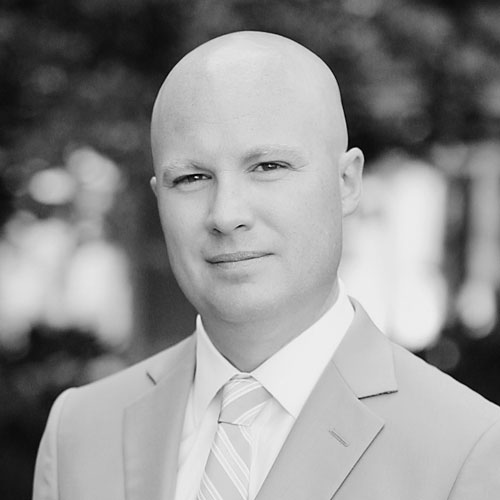When Sarah DiBoise was first approached to work for a law firm that represented hospitals in the early 1990s, the then-corporate transactional attorney had reservations that focusing on healthcare law would pigeonhole her into a narrow field. It turns out, DiBoise says, that she was dead wrong. The current chief hospital counsel at Stanford Health says her job offers her a vital way to contribute professionally to health services’ growth and advancement. “Healthcare matters to people greatly,” DiBoise says. “Anything that I can do on the legal front to help Stanford accomplish its mission in the clinical area is really valuable.”
DiBoise is a natural fit for her role at Stanford Health. She studied human biology at the university as an undergrad and had initially been interested in pursuing a degree in medicine before she developed an interest in law. And though she enjoyed her earlier work in transactional law for tech clients, she finds it engaging to work in the medical industry, particularly at Stanford. The organization has a three-part mission of teaching, researching, and providing clinical care, and it is continually involved with partnerships in Silicon Valley.
“We are in a unique position because we’re surrounded by some of the biggest tech companies in the world, many of which were founded by Stanford graduates,” DiBoise says. This connection has led to partnerships on multiple levels, both in providing healthcare plans and services to employees and through working with companies to test and deliver new products and devices. One of DiBoise’s recent initiatives has been helping to create an accountable care organization—a custom, narrow network plan—for tech workers who live in the area that focuses on delivering high-quality care as efficiently and cost-effectively as possible. The new network plan, Stanford Health Care Alliance, lets employees to choose a primary care doctor affiliated with Stanford and allows them to access specialists at both Stanford Health and Lucile Packard Children’s Hospital. Stanford is also working with tech companies to establish on-site employee health clinics, staffed by Stanford Medicine doctors.
In all of these relationships, DiBoise’s work to develop contracts and agreements has been essential. “There’s a lot of internal work behind the scenes to analyze and develop the product from a legal standpoint,” she says.
Many companies that Stanford works with are currently involved in innovating new products across healthcare fields, which requires focus on patient privacy, medical information confidentiality, and research issues. DiBoise ensures that if programs fall under the definition of research, they go through the necessary reviews. Stanford has also worked closely with tech companies to mine extensive data sets to develop clinical care pathways. “Throughout the country, there’s a huge focus on capturing medical data in terms of clinical outcome,”
DiBoise says. “We’re looking at data that shows how the best outcomes from a certain condition occur when care is delivered in a certain way.”
Off the Clock
Mastering the steps of complex legal work is exhausting, but Sarah DiBoise keeps herself moving off the clock, too. She and her partner Frank have an avid interest in ballroom dance. In addition to taking classes at a local community center dance class over the past eight years, they regularly participate in a dance club called Mates and Dates, which holds dances for members to come together in a formal setting to practice. DiBoise notes that dance clubs have been increasingly popular with members of all ages. “When I first started, I thought this was ancient, but even at Stanford, the undergraduate ballroom dancing is a huge thing,” she says. Themes range from ballroom dances to Western, Latin, and nightclub dances. DiBoise is a particular fan of the Texas Ten Step and is planning to teach a class on it with her partner.
In addition to these partnerships, DiBoise focuses on relationships and affiliations between Stanford, Packard, Stanford Health Care-ValleyCare, and other hospitals in the area. Stanford and Packard each have large physician, nonfaculty networks, known in California as medical foundations. To build these, DiBoise helps forge agreements that enable physicians to be employed through the medical foundations rather than the hospitals.
Outside of these types of partnerships, DiBoise serves as a point person for a number of different legal issues for the hospitals, which range from licensing to billing compliance to other regulatory issues, as well as informed consent issues and involuntary hold procedures for Stanford’s inpatient psychiatric unit. Some of the issues that come up relate to Stanford and Packard’s specific organizational structure. Although both are owned by Stanford and located adjacent to each other, the hospitals are licensed separately.
This relationship has been invaluable to Stanford Health’s organizations because it allows them to work together to provide comprehensive care across units and staff, but it hasn’t been without its challenges. Their separate licensing has also led to minor issues, such as the ability to transfer patients, which is heavily regulated by the Emergency Medical Treatment and Active Labor Act. Most often, this comes up with labor and delivery. While the obstetrics unit is located at Packard, women going into labor who have not received prenatal care from the hospital will, at times, arrive at Stanford’s emergency department, which then requires additional exams and extensive documentation before the patient can be legally transferred to the Packard labor-and-delivery unit. To streamline that process, DiBoise and others worked with state legislators to pass a statute that allows the hospitals to move women in active labor more quickly and efficiently, under an agreement between the two hospitals.
The most satisfying work she does, DiBoise says, is related to patients. She mentions one example of a child with a complex disorder that Packard didn’t have the resources to treat, so she worked extensively to set up an alternate placement and payment plan for the family at another location. Although processes like that can be frustrating work, knowing that the end result impacts the patient in a positive way is a more than worthy reward.
“I really believe in the mission here,” DiBoise says, adding that she also loves that her work contributes to what she sees as invaluable new innovations at Stanford School of Medicine. “The research that is being done at the
Stanford School of Medicine is phenomenal,” DiBoise explains. “I see how those discoveries that they are coming up with year-to-year are transforming the way care is delivered.”
“Ropes & Gray values the partnership we have established with Sarah DiBoise and her team. We look forward to continuing to work closely with them to help Stanford Health Care achieve its key strategic and business goals.” —John Chesley, partner

